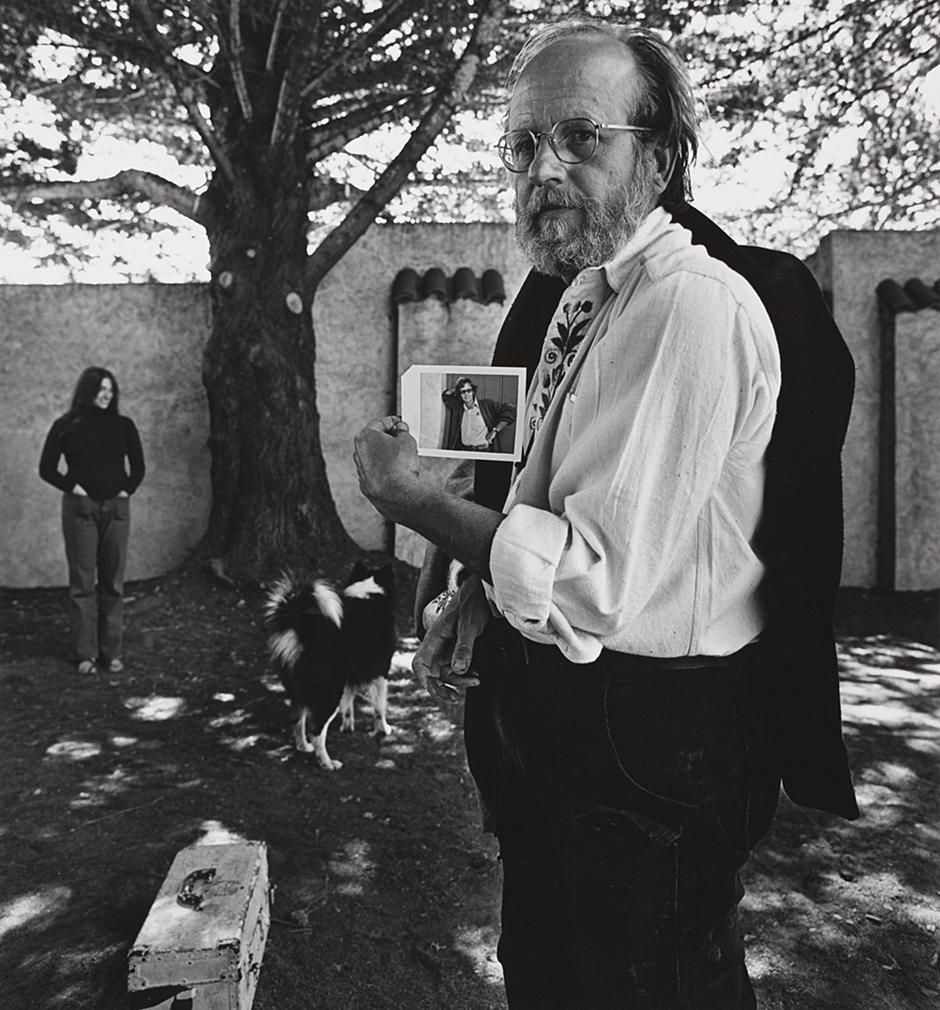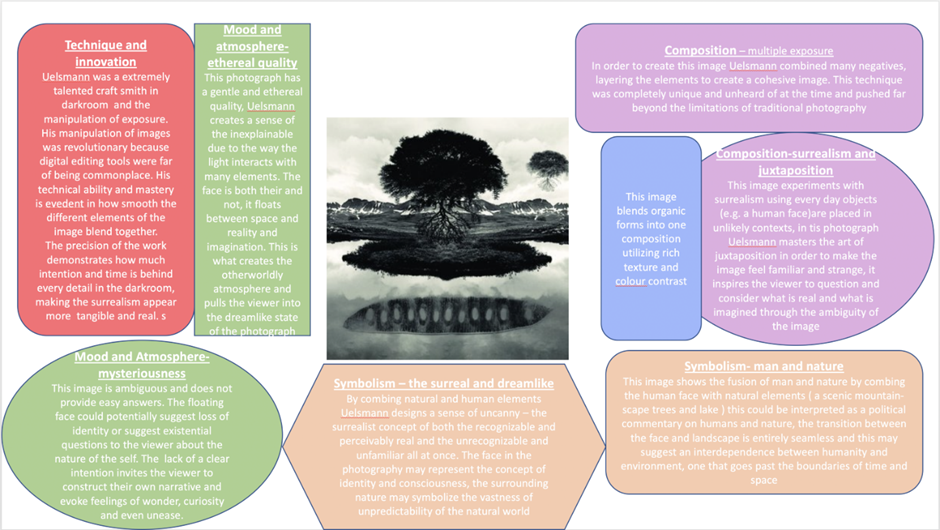Jerry Uselmann was born on June the 11th and is an American photographer known for is individual and unique woke in surrealist photography. He is best known for pioneering darkroom techniques and image manipulation, his photographs combine multiple exposures, photomontage all done by hand to create dreamlike and often wonderous landscapes the challenge the public’s perception of reality

Uelsmann was born in Detroit, Michigan and developed an early interest in art, in particular photographer and as he grew up, he later went on to study at the Rochester Institute of Technology and the University of Indiana, there he earned both his bachelor’s and master’s degrees.
Uelsmann’s academic background in photography, in combination with is innate interest in surrealism (artists like Salvador Dali-a Spanish surrealist painter and printmaker renowned for exploring subconscious imagery) laid out the groundwork for his innovation within the medium of photography and darkroom craftsmanship.

His career lasted over six decades, and his photographs have been exhibited across the world in museums and galleries. His work has had an incredibly notable influence on contemporary photographers, and he has been noticed for his mastery of both technical and conceptual aspects of photography. His works continually inspire artists over many decades and will continue to inspire many in the future to push the boundaries of photography, surrealism and visual story telling.
Uelsmann’s work developed when photography was considered a medium for recording the world around through photo documentation, despite this he ignored the conventuall limits of photography using the dark room for personal exploration and experimentation instead of technical execution.
he combined multiple negatives into one combination, and he created photographs that aligned better within the expected realms of painting and surrealism not traditional photographic expectations.
He creates wonder throughout his photography and captures a sense of mystery with landscapes that include disorientating elements with floating objects, dreamy juxtapositions and altered perspectives.

Some of Uelsmann‘s most notable works include:
”double exposure “(1974) which is a surreal image where the subjects face merges into a vast background,
” The Bus” (1967) which is a photo of a large, impending bus in a large and empty landscape with surreal elements
“Hands” (1980) this incredibly impactful image shows and holding various natural elements, blending the human form with nature in a beautiful and serein way
And finally, “untitled” (1969) a photo featuring a man’s face merging seamlessly with the natural elements like trees, rocks and water.
The face is both a central focal point of the photograph and a part of the wider landscape this technique creates a dreamlike effect and otherworldly aspects that is completely characteristic of Uselmanns work.

Surrealism emerged in the 20th century and was primarily driven by Salvador Dali, Max Ernst and Rene Margritte, it aimed to explore the unconscious mind, dreamlike states and irrational and often uses juxtaposition of objects and altered perceptions of reality. They were not trying to depict the world as it is and as it is perceived but to challenge traditional forms of art and provoke new ways of thinking.
Despite Uelsmann using photography as his chosen medium rather than painting embraced surrealisms ethos by using refined techniques that pushed the boundaries of the medium to is limits “untitled” (1969) is an extremely useful example of why his work decisively belongs within the artistic subcategory of surrealism.
One of the most important characteristics of surrealism is the juxtaposition of ostensibly unrelated elements, this a key feature within Uelsmanns work as discussed above in my analysis, in “untitled” (1967) the face appears organic yet disembodied and this suggests a deep connection between humans and the world around us.
The dreamlike aspect of this photograph draws heavily on surrealist inspiration and its use of contrast to inspire new interpretations
the surrealist movement frequently revolves around the examination of the unconscious mind and logic where societal conventions are not adhered too, in the relevant art work the seamless transition between the presented elements mirrors the fluid sifting of nature in dreams. The face merges with the surrounding landscape suggests consciousness and nature are fundamentally inseparable yet the fusion between them is unnatural and unusual and this creates a sense of disorientation throughout the image.
Uelsmans work often delves into metaphysical and psychological themes as many surrealist artists work does.
The surreal quality of “untitled” (1969) creates a sense of mystery and a foreboding atmosphere, the unsettling quality of this work is a recognized Hallmark of Surrealist values that draws the viewer into a psychological space where boundaries are no longer clear.
This work creates questions with the viewer ‘what happens when becomes intertwined with the world around us? Are humans simply products of nature? Or is there for to humans’ consciousness that is not replicated in nature? These questions mirror the unsettling exploration found within surrealist art.
